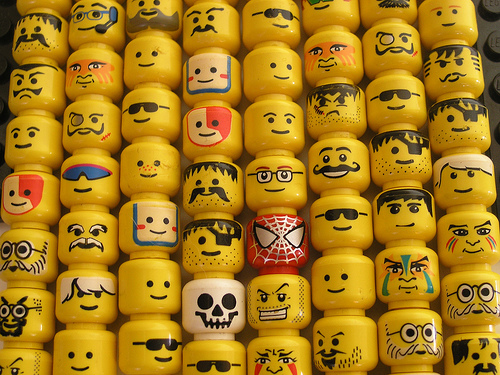
If you’re not yet familiar with crowdsourcing, it’s a new work process that involves getting a crowd of people to help with a task typically performed by one employee or contractor. Imagine needing a new logo for your business. Rather than hire a freelancer, agency, or in-house designer, with crowdsourcing you can post your need and several designers will compete and create a custom logo just for you.
While this is a common example, today crowdsourcing extends far beyond simple graphic design and can be broken down into four main subcategories:
- Microtasks –
Taking a project and breaking it into tiny bits as seen on Amazon’s Mechanical Turk (“the online marketplace for work.”). Each crowd worker can only see his little bit of the project. You could hire one person to label 1,000 photos or hire 1,000 people to each label 1 photo. - Macrotasks –
Similar to microtasks, however, workers can see more, if not all, of the project and can get involved with any portions they are knowledgeable in. This form is most common with solving complex problems such as the X-Prize or seeking out a better recommendation algorithm for Netflix. - Crowdfunding –
Getting a crowd to help fund your cause or project. It’s unique because you set a monetary goal and deadline and you must get fully funded by your deadline or you’ll get nothing. Here is a list of 13 crowdfunding sites. - Crowd Contests –
Asking a crowd for work and only providing compensation to the chosen entries. Commonly seen in design sites like 99designs, and the graphic design example in the opening paragraph.
(For a more thorough explanation, read “What is Crowdsourcing.”)
As the early stages of crowdsourcing continue to gain momentum, there are a few megatrends worth keeping your eye on.
1) Curated Crowds
The bigger your crowd doesn’t necessarily mean better output when it comes to crowdsourcing. This has been made apparent with the early days of crowdsourcing design sites. A design contest yielding 1,000 designs can become simply unmanageable. If you offer a prize large enough, any monkey with a crayon could contribute. I’m not saying a large crowd produces bad results, I’m simply stating there will be bad among the good. Luckily, there are almost always a lot of great designs, but it takes extra time to sift out the bad.
Sites like Genius Rocket have begun shifting to a curated crowd model. Anyone can request to join their crowd, however, they must prove they’re talented before being able to participate in some projects, or even at all. LogoTournament has been silently curating their crowd since the early days.
2) Quality Improvements
As microtasking gains in adoption, more crowdsourcing platforms are seeing success with adding an extra level of quality control on top of the basic input – output model made popular by MTurk. If you’ve used MTurk, you’re fully aware the results you get may be less than correct. Sites like Serv.io & Microtask have added extra redundancy and QA checks to ensure high levels of accuracy. If a client requests it, Serv.io can maintain perfect accuracy when needed. As this option becomes more available, people will be demanding 99.9%-100% accuracy, considering it doesn’t incur a lot of extra expense.
3) The Standardization of Crowdsourcing
As it’s been pointed out, crowdsourcing is not an industry, it’s currently an undefined space. The current leaders in crowdsourcing are working to define this space and standardize as much as we can. Groups like the Crowdsortium are for players within crowdsourcing to discuss what’s going on. Daily Crowdsource, along with David Alan Grier, are leading the pack towards standardization. Grier has been pushing for a trade association for quite some time, and recently has begun publicly discussing it. Daily Crowdsource, Grier, and other leaders are working to define the official taxonomy of crowdsourcing. All these recent motions are to help standardize crowdsourcing in order to ensure a healthy future.
4) Corporate Acceptance
Crowdsourcing isn’t just a fad for early adopters. In fact, several Fortune 100 corporations have taken a big step into crowdsourcing. General Electric is leading the charge with multiple million dollar open innovation projects. Others like General Motors, Procter & Gamble, and PepsiCo continue to execute crowdsourcing projects (not just one-off publicity stunts). Amazon even built one of the largest
crowdsourcing platforms. It’s not often a new process is adopted so quickly by large corporations, but this will make it easier for other Fortune 100 corporations to begin crowdsourcing, which will trickle down to smaller corporations.
5) Early Adoption
Although you may be familiar with the term, crowdsourcing is still in the early adoption phase. A very small percentage of people are familiar with everything crowdsourcing can do. Sure, any tech geek can name 99designs, but can you list 10 other uses of crowdsourcing? Were you aware you could build a car, stress test your website, or volunteer your “waiting in line” minutes to a charity all with the help of crowdsourcing?
Have you tried crowd-sourcing yet? What are your favorite applications and success stories?
David Bratvold is the founder of Daily Crowdsource, the #1 site for crowdsourcing news. His goal is to educate business professionals on the benefits of crowdsourcing.
JTGM8WER4WMM


